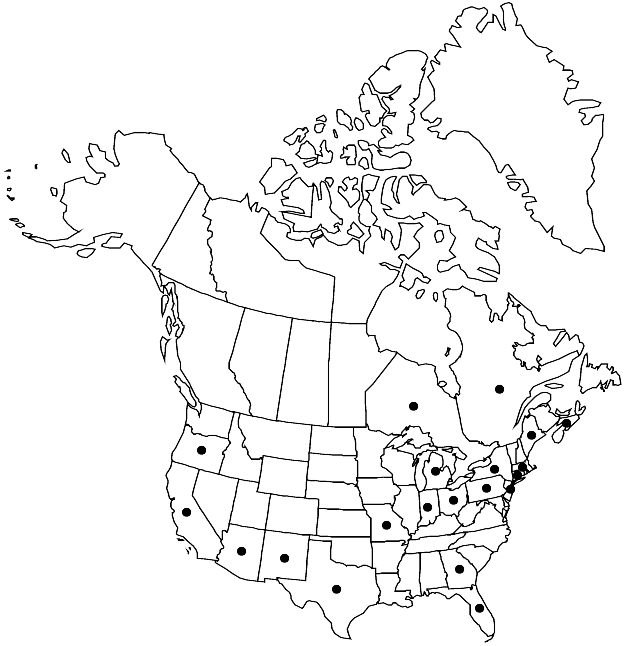Diplotaxis tenuifolia
Syst. Nat. 2: 632. 1821.
Perennials, (usually suffrutescent, roots with shoots from adventitious-buds), strongly scented (with glucosinolates), (glaucescent). Stems erect, 2–7 (–10) dm, glabrescent or sparsely pubescent basally. Basal leaves: blade elliptic to obovate, 2–15 cm × 10–60 (–80) mm, margins sinuate to deeply pinnatifid, (2–5 lobes each side). Cauline leaves petiolate; similar to basal, (distal cauline shortly petiolate, blade similar, with narrower segments), surfaces usually glabrescent. Fruiting pedicels 8–35 mm. Flowers: sepals 4–6 mm, glabrous or pubescent, trichomes straight; petals yellow, 7–11 (–13) × 5–8 mm, (apex rounded); filaments 4–8 mm; anthers 2.5–3 mm; gynophore 0.5–3 mm. Fruits usually erect, rarely ascending, (somewhat torulose, slightly compressed), 2–5 cm × 1.5–2.5 mm; terminal segment (stout), beaklike, 1.5–3 mm, seedless; (ovules 20–32 (–46) per ovary). Seeds 1–1.3 × 0.6–0.9 mm. 2n = 22.
Phenology: Flowering spring–fall.
Habitat: Waste places, disturbed areas, wharf and railroad ballast, sandy beaches, muddy shores, wet woods, mountain slopes
Elevation: 0-2100 m
Distribution

Introduced; N.S., Ont., Que., Ariz., Calif., Conn., Fla., Ga., Ind., Maine, Mass., Mich., Mo., N.J., N.Mex., N.Y., Ohio, Oreg., Pa., Tex., Eurasia, Africa, also in South America (Argentina), Australia
Discussion
Diplotaxis tenuifolia was introduced from Europe as a ballast plant in the last century. It may have failed to persist in some of the recorded provinces and states.
Selected References
None.
Lower Taxa
"elongated" is not a number."thick" is not a number."dm" is not declared as a valid unit of measurement for this property."dm" is not declared as a valid unit of measurement for this property.